Java Testing Tools
In Java, the code can be smaller or larger that depends on the functionality. If a user requires small functionality, the code will be smaller in length and easy to do testing. But if a user requires more functionality in the application, the code will be larger in length and not so easy to do testing. There are various testing tools like Junit, Mockito, and Selenium for testing Java codes.
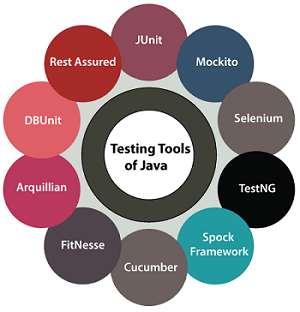
Below are the top 10 testing tools or framework which are best and essential to test the Java code.
Let’s understand each tool one by one and get the difference between these tools.
JUnit
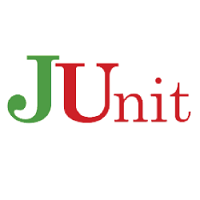
Java provides a framework called JUnit to perform the unit testing of our Java code. In the development of test-driven development, JUnit is very important. The JUnit is one of the frameworks available in the unit testing frameworks. The xUnit is the unit testing framework family, and JUnit is the part of the xUnit.
JUnit promotes the idea of “first testing then coding”, which emphasizes setting test data for a piece of code that can be tested first and then implemented. Junit increases the stability of the code. It also increases the productivity of the programmer.
These are the following features of JUnit:
- An open-source framework used to write and run tests.
- For testing the expected result, the JUnit provides assertions.
- To identify the test methods, it provides annotation.
- We can write the code faster for increasing quality using JUnit.
- For running tests, it provides test runners.
- It is very simple, not so complex and requires less time.
Mockito

Mockito is a Java-based library or mocking framework that is mainly used to perform unit testing of Java applications. Mockito allows us to add mock data or dummy functionality to the mock interface to perform unit testing.
In order to create a dummy object for a given interface, Mockito uses Java reflection. The mock objects are the proxy of the actual implementations. Testing the functionality of a class without requiring a database connection is referred to as Mocking. For performing the Mocking of the real service, mock objects are used.
These are the following benefits of using the Mockito for testing:
- There is no need to write the dummy data on your own.
- It supports the return values.
- It supports annotation for creating mocks.
- It supports exceptions.
- Changing the interface name or re-ordering the parameters doesn’t affect the test code because mocks are created at runtime.
Selenium

Selenium is another important testing suite. Selenium is an open-source Web User Interface for performing automation testing of the Java application. Selenium can be easily deployed on platforms like Linux, Windows etc. Selenium also supports multiple browsers like Firefox, Chrome, and Microsoft Edge etc. In Java, Selenium is mostly used for automated functional tests.
Selenium is very easy to integrate with tools such as Jenkins, Maven and Docker to achieve a consistent testing approach. Tools like TestNG and JUnit help in structuring selenium tests for easy maintenance and report generation.
Below are some features of Selenium which make it useful for automation testing.
- For controlling the speed of test cases, Selenium provides help to the user.
- It allows us to execute the entire Test Suite.
- Selenium helps to run the currently selected test.
- It helps step into each specific command in the test script.
- It helps group all the Selenese Commands together and make them execute as a single operation.
TestNG
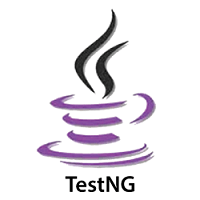
TestNG is a special testing framework that is derived from JUnit and NUnit. It defines some more functionality compared to JUnit and NUnit that make TestNG more powerful and easier to use.
TestNG is also used for performing automation testing. In the name of this framework, NG represents NextGeneration. TestNG is similar to the JUnit but an extension of it. TestNG removed the limitations of JUnit and NUnit like frameworks.
These are the following features of TestNG:
- Just like JUnit, TestNG also supports the annotations.
- TestNG supports the testing of integrated classes.
- TestNG has a flexible runtime configuration.
- TestNG supports several features like load testing, dependent test methods, partial failure and parallel testing.
- TestNG separates compile-time test code from runtime configuration/data info.
Spoke Framework

Spoke Framework is another important testing framework for the Java application. The Mockito framework, which we discussed above, is not a complete testing framework for Java applications. Unlike Mockito, the Spoke framework is a complete testing framework for both the Java and Groovy code. The Spoke framework function on its own, which means Mockito works in addition to JUnit.
These are the following features of the Spoke framework that make it more useful in comparison to JUnit:
- Spoke has more readability in comparison to JUnit.
- It has a clear, documented code.
- There is no need to use a third party.
- Easy and fast to perform API testing.
- It is inspired by several frameworks and tools like Scala, Groovy, JUnit and jMock etc. So, it has features of all these frameworks.
Cucumber

Cucumber is another special tool for performing testing of Java applications. A Behavior Driven Development tool for developing test cases is referred to as Cucumber. It is one of the essential tools for testing the behavior of the Java application. It is mainly used to design test cases, but however, it also plays a supporting role in automation testing.
For observing the functionality of the application, the Cucumber tool follows the BDD(Behavior Driven Development) framework. In Cucumber testing, we write the test cases in the Gherkin language, which is very easy and simple to understand.
These are the following advantages of Cucumber testing:
- It is mainly focused on the end-user experience.
- The test cases are written in the Gherkin language, so it is very easy to understand.
- Unlike JUnit, NUnit, and TestNG, Cucumber allows us to perform end-to-end testing by providing an end-to-end testing framework.
- It acts as a bridge between business and technical language, and the bridge is durable because of test cases written in plain English text.
- It supports languages like Java.net, Ruby, JavaScript, and PHP, etc.
- The testing environment setup and execution both are very quick and easy.
FitNesse

FitNesse is another important testing tool. It is a new tool that is mainly focused on requirements and acceptance testing. It is used to specify and verify the application acceptance criteria. It is a bridge between different disciplines in a software delivery process.
Its test-execution capabilities allow us to verify documentation against the software to ensure that the document remains up-to-date and does not experience regression.
These are the following features of the FitNesse tool:
- It is easy to use the wiki web server.
- It is very easy to setup. We just need to download the application, i.e., the Java jar file.
- It uses the specifications and requirements as test input.
- It supports all the major languages like Java, Python, and C# etc.
Arquillian
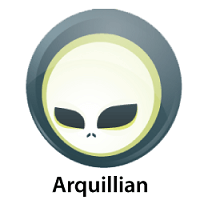
Arquillian is another testing platform design for JVM. It is a highly innovative and extendible tool that allows us to create automated integration, functional and acceptance tests for Java. We don’t need to manage the runtime from the test because it allows us to run the test in the runtime. It is used for
- Managing the life cycle of the container.
- Dependent classes.
- Dependent resources.
- Building test cases.
- Deploying archives into containers.
- Executing tests in the containers.
- Capturing results and creating reports.
These are the following features of Arquillian:
- In order to make code work outside of a real environment, mocks are used. The Arquillian allows us to write a real test because it executes our test at runtime. It gives us access to the container resource and meaningful feedback.
- Arquillian is IDE friendly.
- It is an extensible platform.
- Arquillian provides a rich set of tools.
- It allows us to control the classpath.
DBUnit
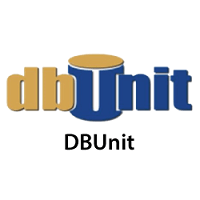
DBUnit is another testing tool to test Java applications. It is an extension of JUnit, which is mainly used to test those applications which are highly dependent on the database.
Many times, we need to run all our test cases multiple times, and the data comes from the database. In such cases, there is a high risk of corrupting the database. The DBUnit helps us to get rid of the risk of corrupting the database. DBUnit fetches the data from the database and test that data.
These are the following features of DBUnit:
- Escape patterns
- Table type
- DataType Factory
- Statement Factory
- ResultSetTable Factory
- Primary Keys Filter
- MS SQL Server IDENTITY Column Filter
- Batch Size
- Fetch Size
- Metadata Handler
Rest Assured

Rest Assured is also a Java-based library that is mainly used to test Restful Web Services. For accessing Restful Web Service, Rest Assured library work as a headless client. By using the Rest Assured library, we can create a highly customizable HTTP request to send to the Restful server.
These are the following features of Rest Assured:
- It allows us to validate JSON responses according to the schema.
- It provides timeouts in tests.
- It allows us to use Groovy closures or Java 8 lambdas to validate the response.
- It can test different authentication methods and SSL.
- It allows us to work with HTTP headers.
- It works with cookies.
- It allows us to work with XML data instead of JSON.
- It allows us to write custom de-serializers.
